Photography Lighting Equipment Explained: Reflectors
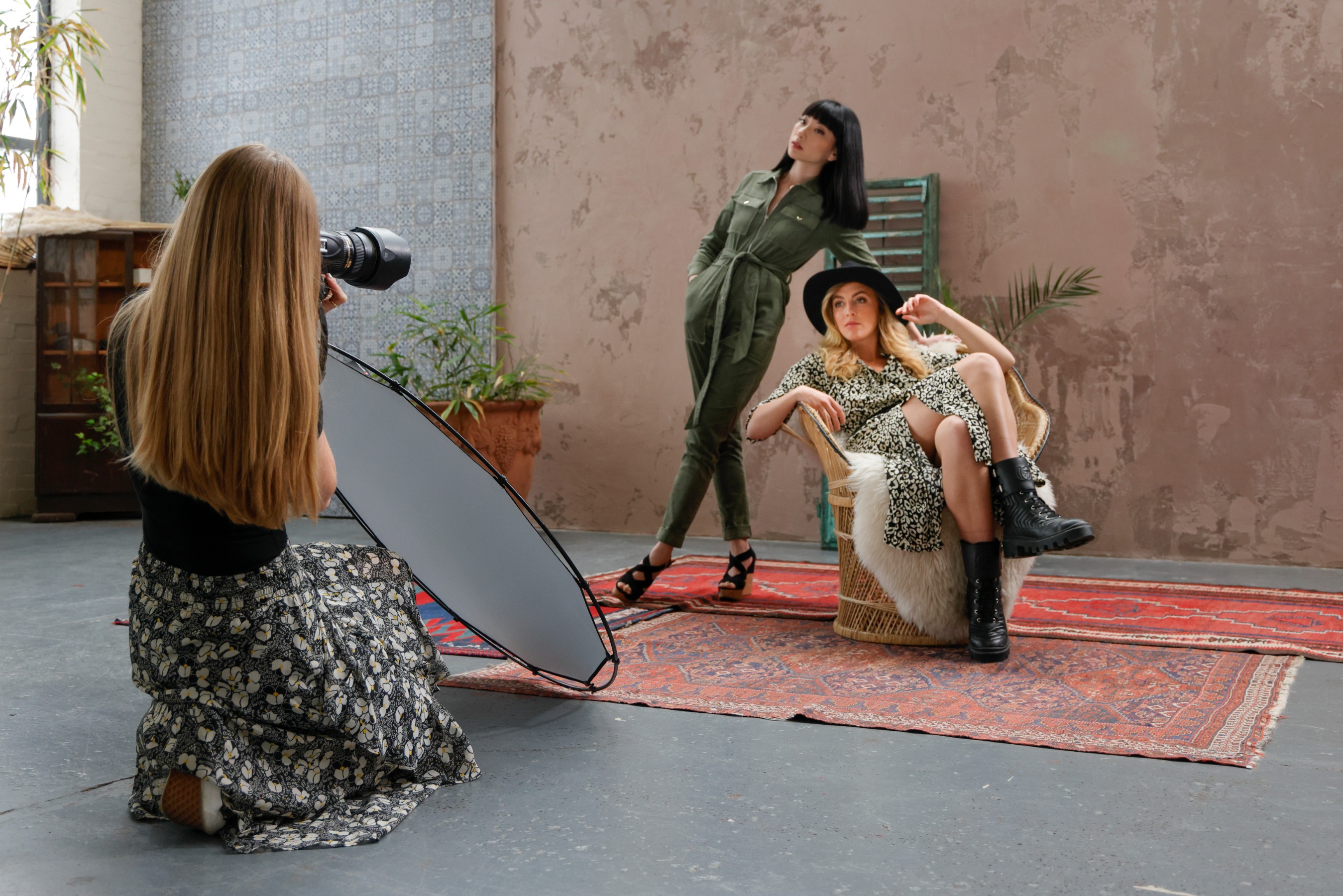

Photography, as the name suggests, is painting with light. Lighting your scene is a critical aspect of photography. Lighting is emotion, and lighting is energy. But the direction and intensity of light aren’t always under your control, and available light sources can be too bright or not bright enough. One of the ways you can control light effectively and efficiently is by using photography light reflectors. In this article, we’ll be covering how to use photography reflectors and what equipment to bring to your shoot.
Why Use Photography Reflectors?
They may be the most underrated lighting modifiers available. For good reason, photographers think it is easier to purchase an extra strobe, and simply throw money at the problem. While it can work, there’s often a simpler, more elegant and much cheaper solution – manipulating the available light using reflectors.
The budget-friendly solution is often as good as, if not better than, using primary light sources. In fact, reflectors can be thought of as being an extra light source. The image you see below was shot with only a single light source, but I used a reflective surface to bounce the light on the face and illuminate the model. It helped me save a lot of money on lighting gear, fill in the shadows, and ultimately create the image both I and my client were happy with.
Types of Reflectors: Shapes, Surfaces, Sizes
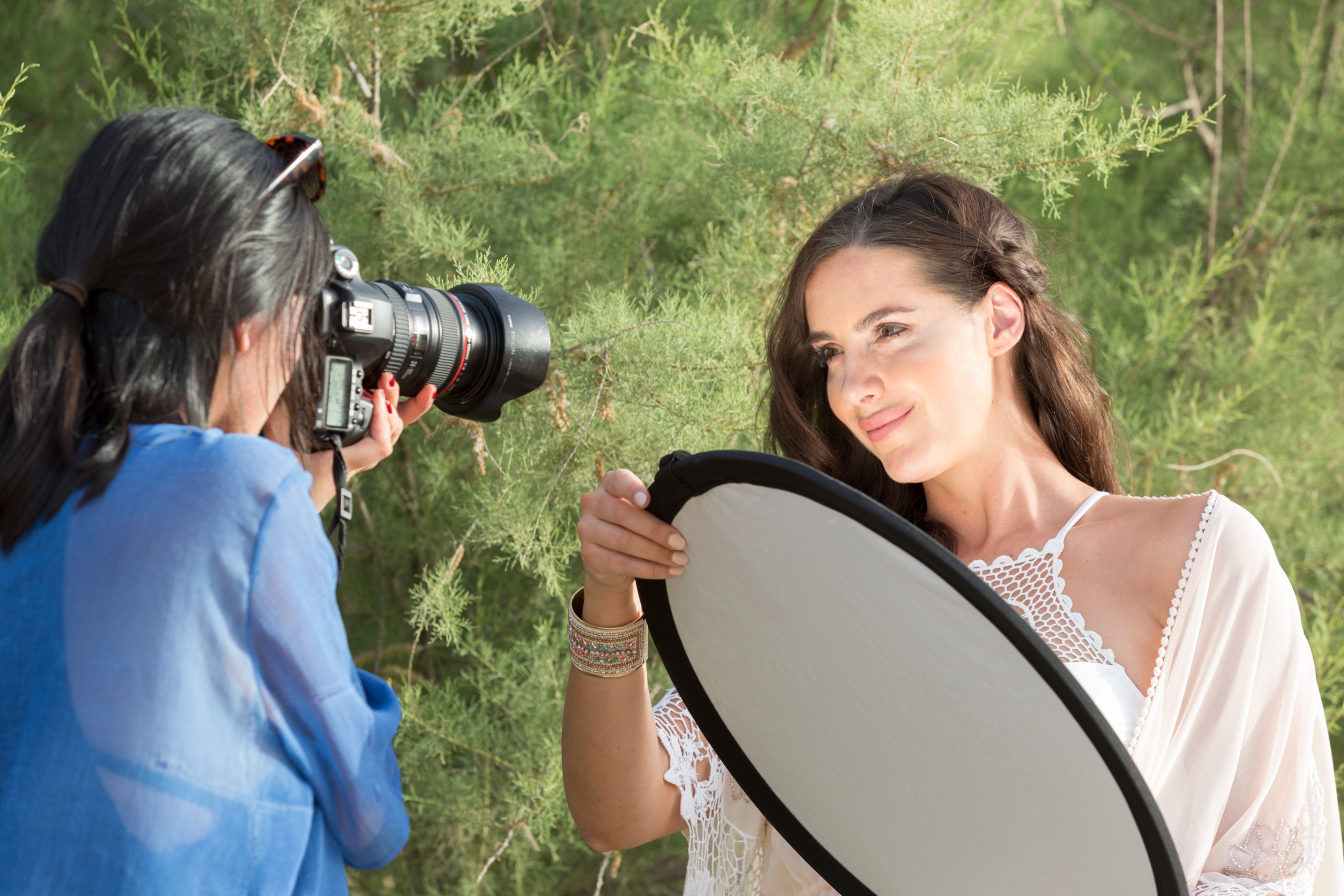

Just like filters and lenses, photography reflectors have multiple styles to achieve different results. From miniature bounce cards for reflector board photography to massive 3-metre-long frames, they all fundamentally do the same job – bouncing light – but the nature of the reflector determines the lighting effect and how it can be used on the set.
The larger photography reflectors are mounted on a lightweight metal tube frame, such as the
. These are often used on large studio productions and on location shoots when powering lights is a challenge. Although the Skylite can get as big as 3 metres long, it strips down to smaller sections and even ships with a transport case, meaning that it is still portable and easy to use on location. The smaller, lighter range of Circular and
could be more suitable for the photographer on the go. As for surfaces, there are commonly four colour options: white, black, silver, gold, and each offers a range of diffusion options. Let’s break them down and see which one is suitable for which purpose.
White reflectors
A white surface will provide a very subtle and diffused fill. Since the surface is white, it will produce diffuse reflection, and hence be pleasantly soft as well as a diffused source. I often use a white surface when I want to lift the shadows on a subject.
Black reflectors
Black would be the opposite of that, and it would be used to create negative fill. If the white surface bounces light, the black, logically, absorbs. I tend to use a black surface reflector when my goal is to create more contrast or remove an unwanted light source in my shot. Another way to use black reflectors is to create different patterns of shadows on your background. In the image below, you can see how I used a black surface to create a perfectly black background. Depending on how far, or how close, you place your black reflector, you will be able to create hard or soft shadows on the background. This is particularly helpful in creating gradient backdrops.
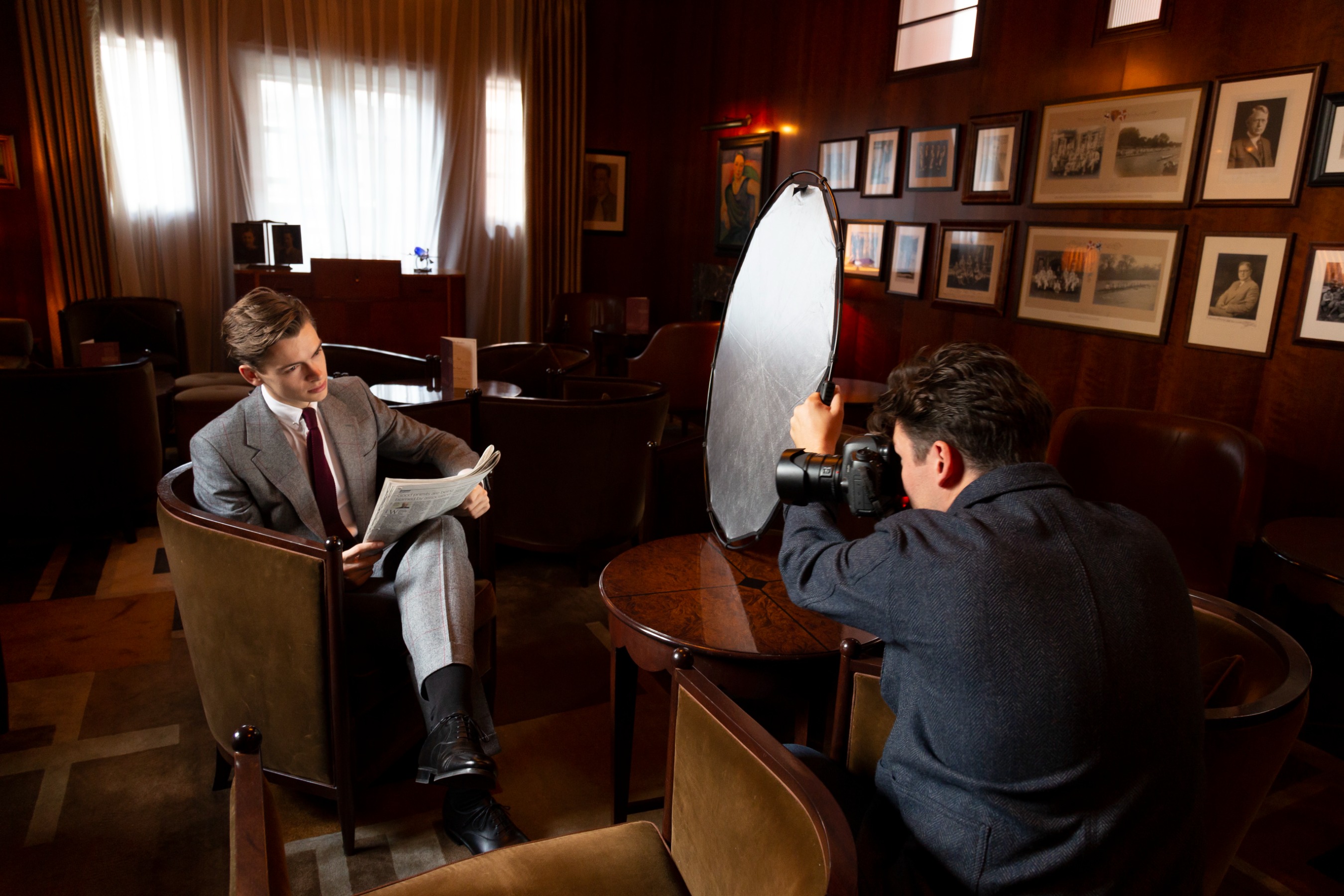

Silver reflectors
The silver surface will produce direct reflection, which is most suitable for creating specular light. Silver and gold surfaces will provide a more directional light, giving a much harder and less diffused light. The silver reflector is perfect in combination with sunlight, as it essentially allows you to shoot regardless of where the sun is. Simply use the reflector to direct the sunlight to where your subject is. The silver reflector will indeed give a colder light than sunlight.
Gold reflectors
Gold works in the same way as silver, but with a warmer colour temperature. The gold reflector is best used when you want to fill in cold shadows, or give a warmer look to the skin.
Silver and Gold Blends
Manfrotto offers a unique option of having degrees of silver and gold in your light. That is why reflectors have the option of shipping with soft silver, sunlight, and sunfire surfaces. Soft silver is a mix between white and silver; sunlight is a silver reflector with a hint of gold to replicate sunlight, and sunfire is an even mix between silver and gold.
Why Manfrotto Reflectors?
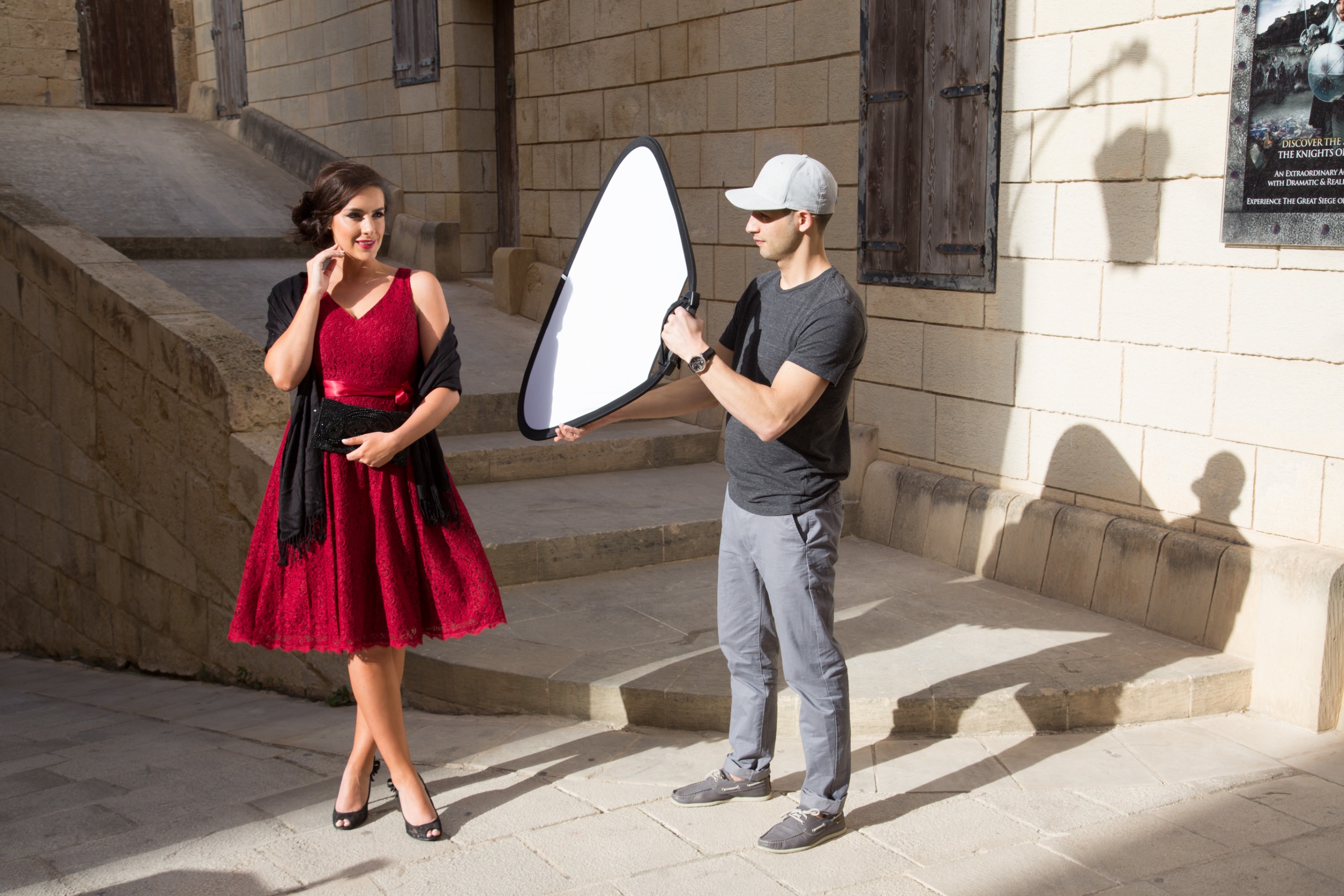

There are a lot of different reflectors out on the market. Since your reflector will have a direct impact on how your image looks, it is advised to pick a high-quality reflector. Just from experience working as a commercial photographer, I have seen reflectors tear, break, and provide vastly inconsistent results. For example, two silver reflectors that provide inconsistent results will decrease the quality of your image, which can result in clients as well as yourself being unhappy.
Manfrotto reflectors are made of the highest quality materials on the market. This makes it much easier to use reflectors together and not worry about the colour cast coming from each reflector. Additionally, Manfrotto reflectors are much more durable than those made by other manufacturers which ultimately saves money. Given the vast range of reflectors made by Manfrotto, the photographer really can find exactly what is needed. Another benefit is that even if you take a large 3-metre panel, and combine it with a small 90cm reflector of the same surface, you will get a consistent result. This is important for photographers and creators who demand the highest image quality.
Every photographer will agree that all light is light. Therefore, it doesn’t matter which light source you use with the reflectors. They can be used with flash, continuous light, direct and indirect sunlight. What I often do is combine a mix of flash and natural light. Since going out on location involves carrying gear, I often take a flash and a reflector. That way, I have two light sources that I can combine. Before I owned a more expensive battery-operated flash, I took a reflector with me. Both at beginner and more advanced levels, reflectors are truly irreplaceable tools.
Collapsible Reflectors for the photographer on the move
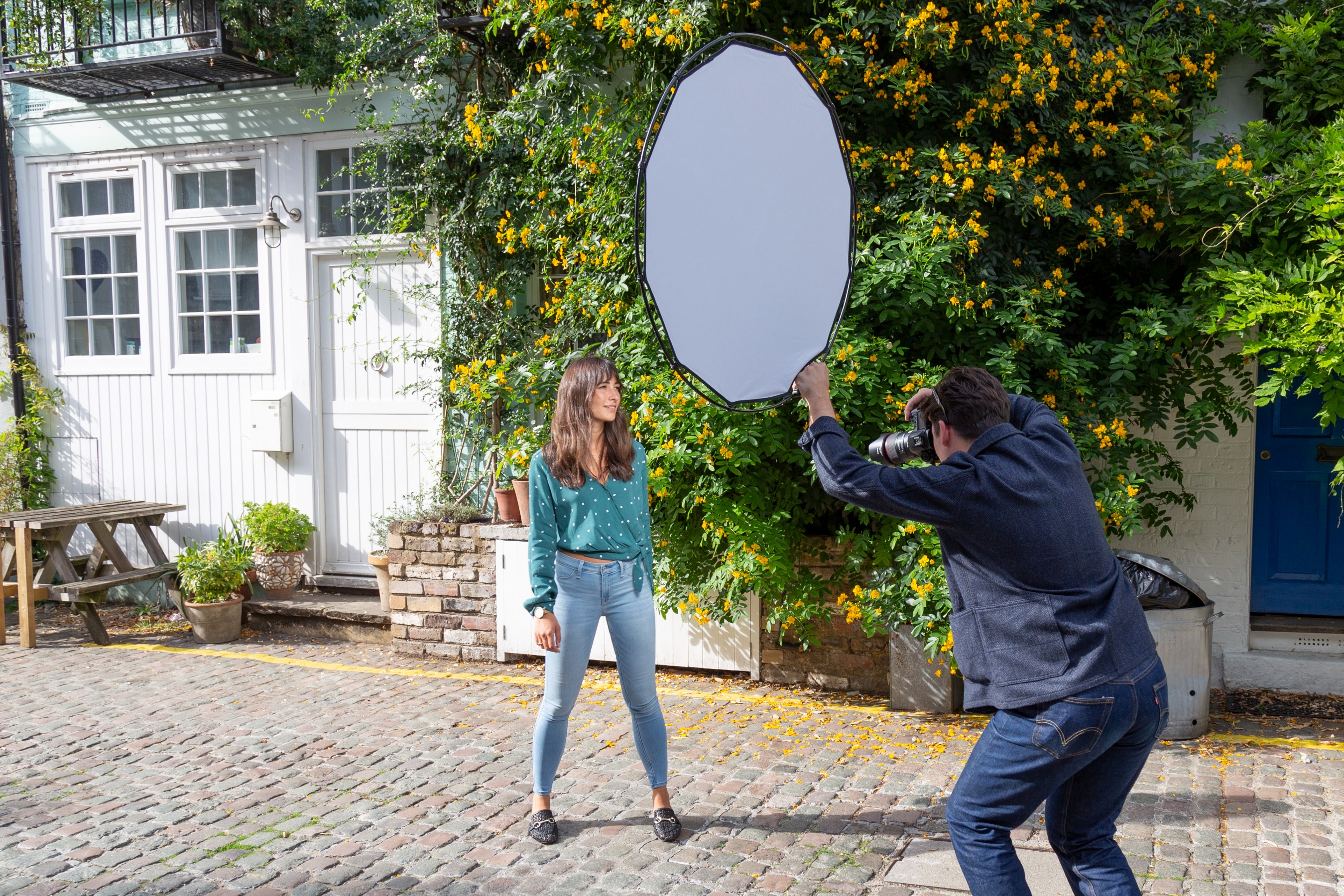

Collapsible reflectors such as the Halo are made to be lightweight and compact. The HaloCompact Reflector is unique in its construction as it combines rigid design with portability. Being able to collapse into small sections, the is a perfect option for photographers on the move.
The innovative and patent pending design of the HaloCompact make it into one of the most popular reflectors on the market. Photographers and videographers alike have praised it for portability and ease of setup. The material, which simply clips on the round frame, is also durable and reflects a lot of light.
Should you want a rectangular reflector, the is an extra option, which you can mount on the stand using a . Note that the Halo Compact and can be mounted without a bracket. Another design that is popular amongst photographers is the . It combines five surfaces: gold, white, sunfire, silver, and diffusion. Unlike the zip design found on some cheaper alternatives, this one slips on easily and keeps tension, which helps the surface be more efficient in bouncing and reflecting light.
A special type of reflector is also available: the . It is designed specifically for beauty and portrait work. It creates a perfect fill light that makes the neck look more even. What makes it different is the ability to adjust the individual surfaces to be in full control of the light that you create. Another use for the Triflector is the catchlights. If you’re particular about how they look in the eyes, be sure to pick up this modifier and use it to make the catchlights beautifully unique.
Triflip — The Iconic Manfrotto Reflector
These are ready for any lighting scenario as there are a total of eight surfaces to choose from. The reversible sleeves make changing surfaces very easy, and the triangular shape of the makes it much easier to hold and manipulate the reflector. By replacing the circular design with a triangle, the whole construction is made more rigid and reduces flop. The Triflips feature Manfrotto’s Durastitch technology, and double laminated material, which improves longevity. This reflector is perfect for adding an extra punch of light to portraits and fashion work. For example, you can add a strobe using the TriGrip bracket. The TriGrip handle makes holding the reflector incredibly easy for your assistants.
Go Big or Go Home – Skylite Rapid
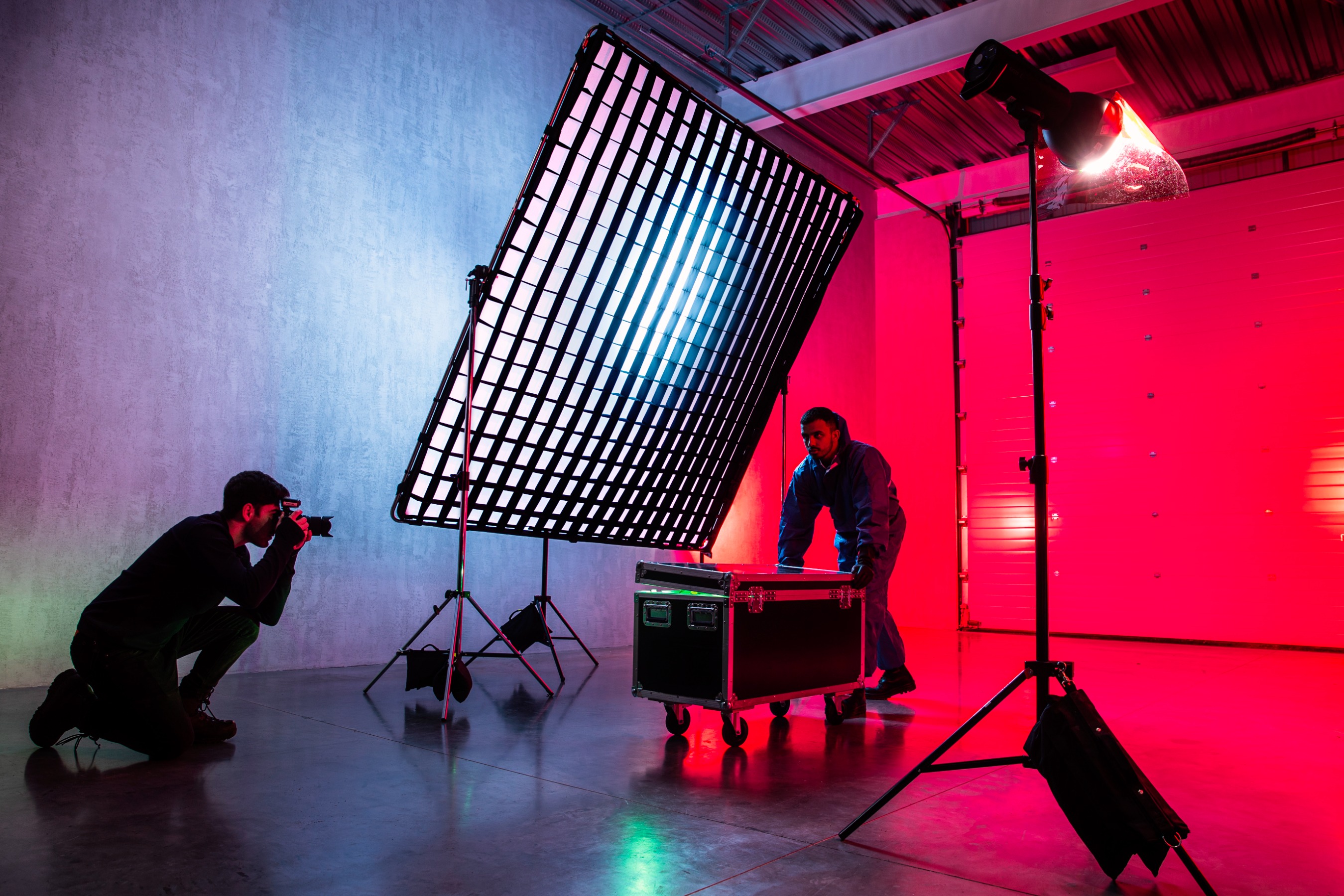

If you want to go big on your “collapsible reflector”, you can pick the . For a large frame, the Skylite rapid is the best in its class. It combines both sturdy design, as well as portability. The fabric simply snaps on the frame, which makes the setup very fast and easy. Additionally, such frames can be accessorised with grip heads to allow them to mount to light stands, a support kit so that they can stand on their own, or a crossbar so that an assistant can hold them. From experience, the crossbar is a perfect addition to the smaller Skylite rapid kits. If you are purchasing the larger one, it is strongly advised to get it with the grip heads. A new optional accessory that was recently introduced is the SNAPGRID as illustrated on the Skylite Rapid above. If you need to reduce light spill over a large area, using such a grid is a must.
On reflection
As you can see, there is a reflector for everyone. The wide range of Manfrotto reflectors take versatility, durability, and availability to a new level. Starting at the Triflip and finishing with the Skylite Rapid, there is a size and shape that will suit pretty much any application and shooting situation. By choosing Manfrotto reflectors, you invest not only in an iconic and proven brand, but also in quality, durability, and consistency. The cherry on top is that the warranty can be extended by another eight years when registered online, which is another reason why I like and recommend Manfrotto reflectors.


























